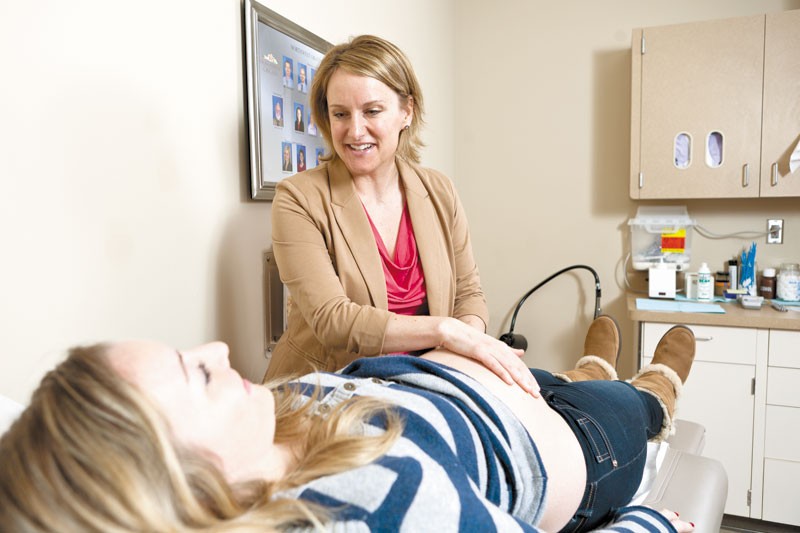There have been midwives almost as long as there have been babies. In the Biblical story of the exodus, it was the Israelite midwives who spared the newborn sons from Pharaoh’s infanticidal decree. Back in ancient Greece, midwives were key figures among the all-female circle present at childbirth. Several centuries later, midwives continued to accompany births during the medieval period, when they used herbs and bloodletting — state-of-theart medical practice of the day — to bring about a quick and healthy delivery.
Today, midwives are still common throughout Europe, attending around 75 percent of all births. In Germany and England, they also provide valuable postnatal care through follow-up home visits.
In America, however, midwives’ fortunes have waxed and waned. Over the past 200 years, their presence or absence at childbirth could be seen as an indicator of the prevailing social attitudes. At times when they’ve been in favor — such as during the immigration boom in the mid-19th century — one could be expected to be on hand at almost every birth. And when midwives have fallen out of favor, they have become virtually extinct. As recently as 1989, certified nurse-midwives (CNMs) attended just 3.3 percent of all births in the United States.
Since then, midwifery’s ups and downs have continued. The 1990s saw a rapid increase in CNM-attended births, but the 2000s brought further dips and plateaus as scheduled cesarean sections became popular.
Yet the mood is shifting again, and the number of professionals who practice this modern medicine with an ancient pedigree is on the rise. In recent years, their attendance at births has bounced back from earlier lows.
Shelley Northern, a CNM at Northwest OB-GYN in Spokane, says there are any number of reasons why a woman might prefer to be accompanied through her pregnancy by a midwife rather than an obstetrician. What it generally boils down to is the “personalized approach” that midwives tend to provide.
“I think women choose certified nursemidwives because they’re hoping to avoid what they might perceive as unnecessary testing or unnecessary medical intervention during their pregnancy or during their birth. I allow the visits to be patient-guided. I don’t walk in with a specific agenda other than the basics of safe care,” she says.
There’s also the sense of kinship that can get lost in the hierarchical patient-physician relationship, says Northern.
“When a 25-year-old woman comes for a prenatal visit and she’s being cared for by another female who’s maybe 10 or 15 years older, it’s more comfortable to talk about pregnancy and concerns surrounding pregnancy. It feels like you’re meeting with your older sister — only your sister happens to be an expert in pregnancy and birth.”
Liz Britain, Northern’s partner at Northwest OB-GYN and a 26-year veteran of the field, says that CNMs offer two distinct advantages over obstetricians. As trained nurses, they adopt a more “holistic” mindset, which includes advice on nutrition, exercise, stress management and childbirth preparation. They also have a smaller “scope of practice.” Unlike physicians, they don’t have to accommodate busy surgery schedules, leaving them more time to converse with patients.
Despite their more limited range of services, midwives have often found themselves at odds with obstetricians — an antagonism that can be traced back to the 18th century, when their roles in birth were reversed. Britain and Northern say that antagonism naturally arises where their areas of responsibility overlap, but each profession has unique — and necessary — strengths.
“Our training is based on normal, healthy women,” says Britain, who estimates that more than 80 percent of all pregnancies are straightforward enough to fall under that kind of care. “You don’t really need a trained surgeon to deliver a baby, but you certainly need them available 100 percent of the time. You need the expertise of a physician if things go wrong.”
“The relationship between a nurse-midwife and her physician is critical,” Northern adds. “Having a clinical practice that has both nurse-midwives and obstetricians is a really nice balance.”
Any professional friction might also stem from the historical misconception that midwives are untrained. Northern and Britain, both of whom are certified nurses with a decade of higher education under their belts, note that there are roughly three tiers of midwife training. These range from lay midwives, who have no formal training, to CNMs, who are educated, tested and accredited.
“When you say ‘midwife’ to a physician, their hair can sometimes stand on end, because there have been many times when they’ve had to accept a transfer from a home birth that was not managed safely,” Northern says. “That’s where a lot of the medical community’s cold shoulder toward midwifery comes from.”
As the American public — and perhaps just as importantly, hospitals and health care providers — becomes more aware of those distinctions and the benefits of a midwife-led pregnancy, Northern and Britain are watching the profile of their profession rise, both regionally and nationally.
“A greater percentage of women are seeking out nurse-midwifery care as a means to having a more positive birth experience,” says Northern. “Generally speaking, nurse-midwives have one foot in the essence and art of midwifery, and we have the other foot in the world of science, medicine and technology. It’s really the best of both worlds.”




















